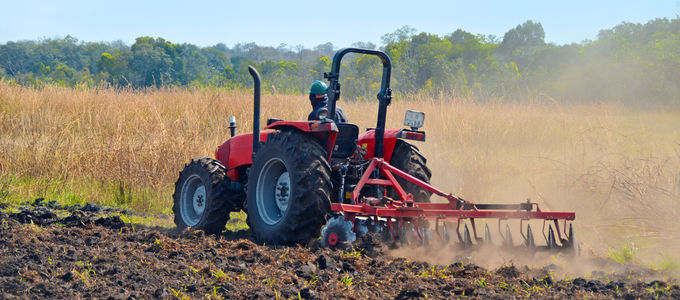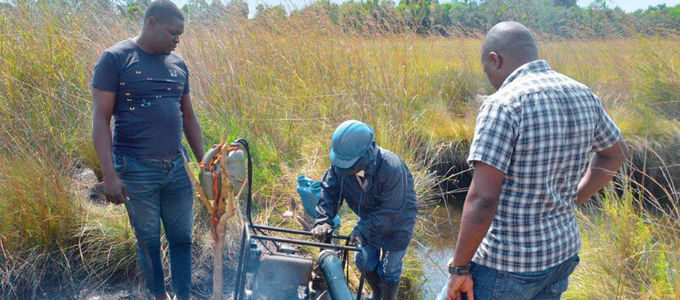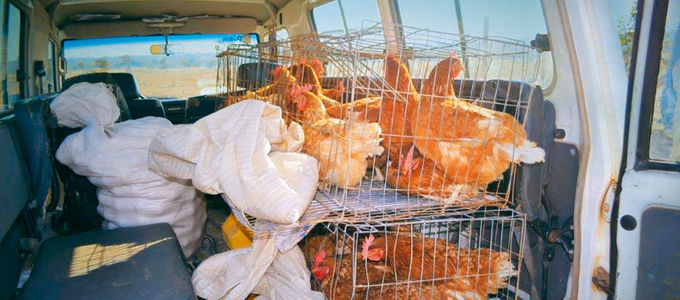
Angola is booming — and yet the gap between the poor and rich is still growing. Many people still lack the bare necessities. Some, however, are finding new prospects in a project organised by two New Apostolic relief organisations.
After the end of a 27-year civil war, which ended in 2002, this country in Southwestern Africa has experienced a powerful economic turnaround. This is thanks in no small part to its mineral resources, which include diamonds, coal, phosphate, and above all, oil wells.
Foreign investors have dubbed the country’s capital of Luanda the “Dubai of Africa”. Prices are climbing to dizzying heights in keeping with the skyscrapers. A regular hotel room in the city costs some 400 Euros per night, and it is quite normal to pay over 20 Euros for a pizza. The upper classes can afford such a lifestyle.
Behind the shiny facades
But behind the pretty facades of Luanda, even the casual observer cannot fail to notice the dilapidated skyscrapers, abandoned construction sites, rapidly spreading slums, toxic sewers, and enormous landfills. More than half of the population lives below the poverty line.
Most of these people have no access to electricity or clean drinking water. On average, they must survive on less than one Euro per day. Malnutrition is one of the consequences. Doctors and hospitals are rare. Nearly one in ten children dies before reaching the age of five.
These contrasts between the rich and the poor are not only evident in the cities, but also in the rural areas. There a large part of the population leads a harsh life working on farms or in the diamond mines—such as in the region of Luanda Sul in Northern Angola, for example. However, the “Muachicuco” farm, some 30 kilometres from the diamond centre of Saurimo, shows that there are indeed alternatives.
A farm as the nucleus
The District Apostle Helper for Angola, João Uanuque Misselo, was given approximately 200 hectares of land for his work as a cartographer after leaving the military in 2002. Since he would never have been able to farm such a large piece of land by himself, he signed it over to the local relief organisation of the New Apostolic Church Angola—known as ANAC (Accao Nova Apostólica de Caridade)—in 2013.
Prior to that, NAK-karitativ had primarily supported projects in the capital of Luanda. Now there was an opportunity to promote a project for education and nutrition in rural areas of the country as well—with the help of donations from European members.
Agriculture and stockbreeding
At the beginning of this collaboration between NAK-karitativ and ANAC, land on the farm was cleared for cultivation. The first crops planted included tomatoes, millet, sweet potatoes, and corn—the most popular foods in the region. With each new season, the variety of crops has expanded. Pineapples have turned out to be an especially important crop. The sale of dried pineapple and even juice to the neighbouring villages has generated significant profits.
After some initial difficulties in pig and cattle farming, the emphasis in animal farming has shifted to laying hens and egg production. For one thing, the production of eggs provides a secure income for the farm, and beyond that, the higher supply stabilises the prices on the markets, which fluctuate sharply due to transregional imports. This way, even more people are able to afford a balanced diet.
The project is growing
In recent years, the mining industry has experienced a decline that has gone hand in hand with a rise in unemployment. The construction of six residential buildings on the farm site this year offers both job seekers and their families a new perspective. The houses are supplied with water from a stream that flows through the property and bears water all year long. Electricity is generated by an on-site solar installation. In addition, each of the families has been given a hectare of land for their own agricultural use.
In turn, the residents of the settlement work about 20 hours each week on the fields of the farm. The women of the farm workers find employment in different branches of production and thereby increase the family’s income. In addition to creating a greater degree of self-sufficiency, the land that has been provided allows for the manufacture of other products for sale. An additional meeting room makes it possible for both children and adults to receive education and training, and also offers a space to gather for divine services. In the future, a small elementary school will give the children of the farm and its surroundings a chance to receive an education.






















